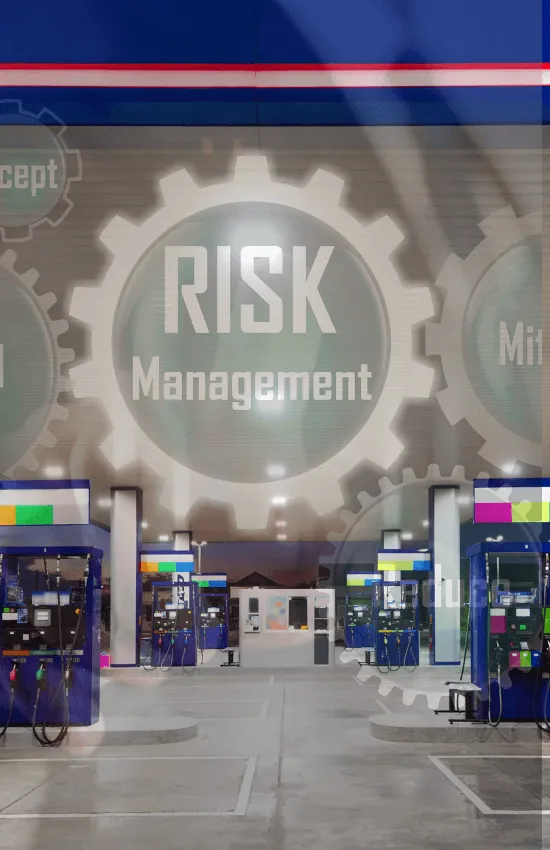KNOWLEDGE BASE
Knowledge Base for Our Technologies
Frequently Asked Questions
Learn from our often-requested snippets of info collection
What is Tank/Line Testing?
It’s a method of proving the tightness or integrity of a fuel storage tank and its associated lines, i.e. leak-checking a system.
Is testing a legal necessity in South Africa?
Is testing a necessity in South Africa?
A: Yes, according the South Africa Bureau of Standards (SABS) – particularly SANS 10089-3:2010 Edition 4.
How often must a tank or line be tested?
According SANS 10089-3:2010 Edition 4, tank/pipework integrity testing must be carried out:
- Following installation;
- Following repair, maintenance or upgrading;
- When ownership of the tank changes;
- When monitoring methods (SIR or ATG) indicate the possibility of a leak; or
- In absence of continuous leak detection, testing should be carried out every 2 years.
What are further reasons to carry out tank integrity testing?
Besides guarantees and peace-of-mind that comes with testing:
- Avoid leaking stock into ground
- Avoid damaging vehicles with contaminated fuel
- Avoid hefty clean-up costs associated with leaks
- Avoid fines and penalties for polluting
- Avoid damaging public and client relationships
How is the Leighton O'Brien Test different from Masstech?
Leighton O’Brien (LOB) has upgraded its Precision Integrity Test. It has improved testing capabilities, making it more reliable and operationally more accurate. It will find potential leaks and issues that other test methods won’t. It enables technicians to diagnose any problems more easily. In some cases, the test time is shorter, so technicians will be off the site quicker.
What’s different about it? How is it better?
The test process is still a mass-based test but uses better sensor equipment and software. It offers improved testing capability with the following key advantages and benefits:
• More comprehensive: Rather than taking a moment-in-time mass reading, it takes continuous mass readings, every second, from all parts of the tank using multiple different pressure sensors (rather than just one).
• More reliable and accurate: No manual input is needed – it’s an automated test system. Quality control and analysis is built into the software, so there’s less data variables/anomalies.
• Instant feedback: Provides a live leak rate/result on screen. Techs will immediately know if the tank is a PASS or FAIL. Technicians can diagnose problems more easily, with confidence and accuracy. Leaks and issues can be resolved quicker.
• Saves time: Ullage test occurs at the same time as the wet test Interstice monitoring/testing can be completed during the tank test. Data collection time is shorter. Technicians can be off the site quicker.
Is it certified?
Yes, all leak detection technologies employed by PetroMonitor and LOB has been independently assessed and verified by appropriate third-party organisations – Ken Wilcox & Associates (KWA) and the National Work Group of Leak Detections Evaluations (NWGLDE).
A: And certified to the highest environmental standards in the world – the United States Environmental Protection Agency (U.S. EPA).
How Does SIRA Work?
On the face of it, SIRA looks very similar to old-fashioned inventory control – the owner or operator, using simple equipment, tracks tank volumes, deliveries, and sales. However, the similarity ends there. Simple inventory control is relatively imprecise. Depending on your system throughput, you could be losing thousands of litres every month without realising anything is wrong!
By contrast, our SIRA analysis can be very sensitive and accurate. It takes the same inventory data and analyses it for releases so small that many would go unnoticed with inventory control. By using a month’s worth of good tank data, it is possible for SIRA to detect a release of just under 18 litres per day (that’s about 540 litres per month) from a tank or its product lines.
What will SIRA cost me?
One of the major benefits of SIRA for UST owners and operators is that it does not require a large up-front investment of capital – the primary cost is subscribing to the services. The equipment needed to use the method is usually already found on-site at most UST facilities.
What equipment is necessary for SIRA?
Only three things are required:
1. A dipstick or Automatic Tank Gauge (ATG)
2. Calibrated dispensing meters
3. Inventory recording forms (provided by PetroMonitor)
What information should you provide to PetroMonitor?
PetroMonitor may ask for a variety of information, some of the more common elements include:
• Tank size (capacity)
• Tank type, material of construction, and manufacturer Product type
• Date each dipstick measurement was taken
• Daily closing dipstick measurement
• Daily sales
• Deliveries (and dates) over the course of the month

